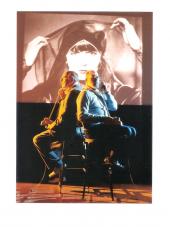`The We and the I': Less sunshine from the spotless mind of Gondry
The casual cruelty of the teenage pack has filled our headlines and courtrooms of late -- bullying and rape being perversely perennial crimes. Sad to say, there's nothing new about peer-and-sneer group pressure to do awful things collectively that you'd never do one-on-one. What's new is the generation's 21st-century obsessive/compulsive need to record and disseminate its antisocial behavior on so-called social media.
It's as if French director Michel Gondry had an advance vision of the big news stories for his amazingly prescient "The We and the I," which opens this year's CMU International Film Festival (subtitled "Faces of Media") tonight at the Melwood Screening Room, Oakland.
Gondry's dazzling films -- "Eternal Sunshine of the Spotless Mind" (2004), "The Science of Sleep" (2006), "The Green Hornet" (2011) -- have been on the cutting edge of both form and content. This one is less dazzling visually but no less provocative: A group of
"Have a safe and wonderful summer," the marquee on a dead storefront wishes them. Its bland irony suggests they might not, if this final bus ride is as rough as it looks to be at the outset. In fact, it will get progressively rougher, and the bus will become a microcosm of trash-talking friends and enemies, with evolving rivalries and anxieties during the course of a mobile drama in three succinctly labeled acts.
In Part 1, "The Bullies," the kids' initial euphoria of liberation manifests itself by wilder-than-usual taunting and misbehaving. Upon boarding the bus, big bad boys throw good little ones out of their seats, hanging two up by their backpacks on hooks while insulting and harassing an elderly white lady who dares to object.
They treat each other even worse. Like hungry hyenas circling a herd of gazelles, they look for the weakest, zero in on his/her most vulnerable spot, and move in for the emotional kill. The girls, for their part, debate who will and won't get invited to the Big Party that night -- in the most mean-spirited way -- while all the boys and girls alike mock an older man with a cleft lip who has the miserable misfortune of sharing their bus.
In Part 2, "Chaos," certain teens' stories and backstories are fleshed out a bit -- alternately funny, sad or just strange: Pretty boy Michael (Michael Brodie) sits back with the nastiest and "coolest" jerks. Budding sketch artist Teresa (Teresa Lynn) is much dumped on by them for her weight and wig. A smooth-talking boy with delusions of Donald Trump grandeur tries to get the girls' attention but manages only to get kicked off the bus. Two gay guys are lost in the tearful process of breaking up.
The film's quintessential "we" vs. "I" depiction, perhaps, is the girl who loudly rejects and humiliates an unpopular boy's invitation to see a movie but -- once off the bus and out of others' earshot -- says yes and gives him her phone number.
Gondry's claustrophobic bus-based mise-en-scene is periodically relieved by pertinent mobile-phone videos, text messaging and trompe l'oeil F/X, adding surrealistic touches to the realistic feel with his trademark flair. Some characters appear and disappear from the bus, without ever entering or exiting it. At one point, Jesus appears to break up a potential fight.
I think.
In Part 3, "The I," the kids' one-by-one disembarkations thin out and settle down the story into a three-character melodrama focused on Michael, Teresa and a hitherto silent boy (wrapped up in his headphones), who has never spoken -- or been spoken to -- before.
Director/co-writer Gondry shared a Best Original Screenplay Oscar with Charlie Kaufman for "Eternal Sunshine," that brilliantly inventive rom-com with Jim Carrey as a shy oddball stunned to learn that girlfriend Kate Winslet has undergone an experimental psychiatric treatment to have her memories of their relationship erased. "Science of Sleep" was an equally sweet romantic fantasy with terrific dreamscape animation and a charismatic performance by Gael Garcia Bernal.
Trouble here, with no such star power, is the unpolished, uneven quality of the young amateurs' performances -- some quite good, some not. As with all multi-character vehicular dramas where people are forced to deal with each other on some plane, train or ship they can't get off, they -- and we -- are stuck here for the long haul.
(But Mia Lobo is great as the no-nonsense, above-it-all bus driver!)
However rambling and imperfect this picture may be, "The We and the I" will tell you more about what it's like to be an urban teenager today -- not just in the
The third act is too didactic and scripted, unlike the first two. But if the ending rings false, which it does, it's not a failure. Gondry's art imitates life even though he, like society, doesn't quite know how to resolve such huge new and old conundrums. There are a thousand mini-Steubenvilles and school-bully outrages being captured by a thousand cell phone cams on a thousand buses every day.
Viral, indeed.





